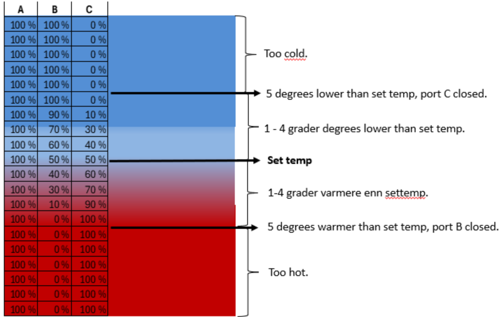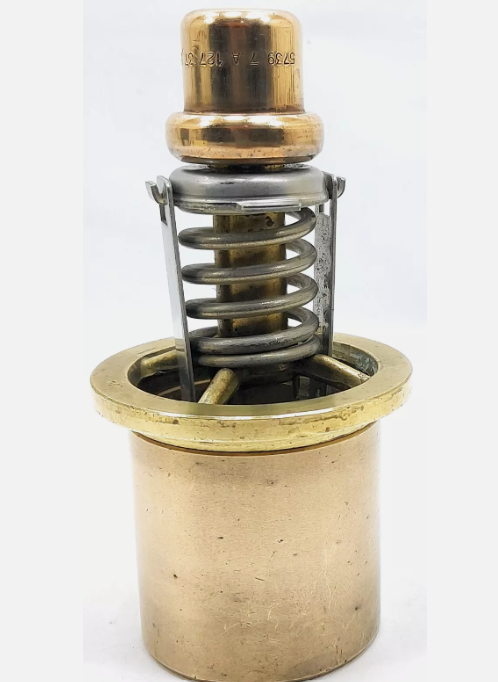
How the thermostatic elements work
Illustration shows thermostatic elements for model B, i.e. 1096X for valves without manual override and 2433X for valves with manual override.
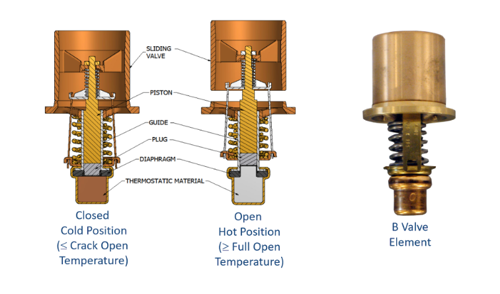
Flow through the valve when system temperature is at least 5 degrees colder than set temperature
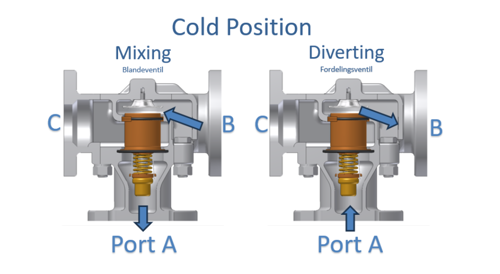
Flow through the valve when system temperature equals set temperature
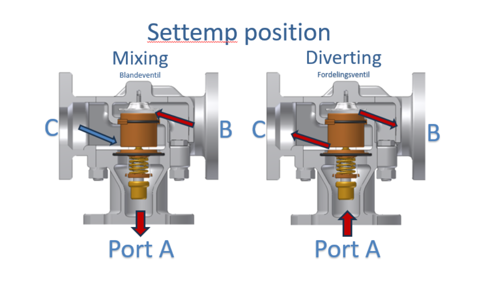
Flow through the valve is when the system temperature is at least 5 degrees warmer than the set temperature
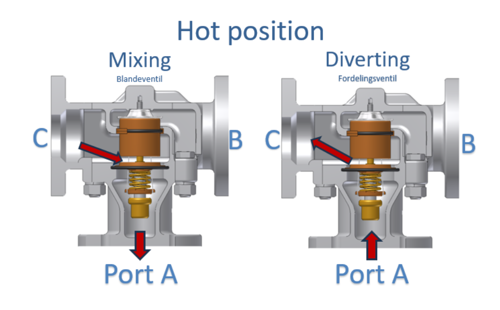
Ideal flow across ports B and C at different temperatures
The table below shows how much flow there should ideally be over ports B and C at different temperatures. Mentions in particular the following three temperature levels:
|
|
General information about leakage
Leakage can be the result of corrosion, material cracks or broken gaskets. External leakage will be easily detected by visual inspection and is most often due to defective or missing seals. Internal leakage can easily be detected by measuring temperature as described below.
Wanted Internal Leak Over Closed Port - Leak Hole
In some systems, there is a need for a small flow over a closed port, this is solved by drilling leakage holes as follows:
- Wanted leak over gates A – B: Drill holes in the thermostat element.
- Wanted leak over ports A – C: Holes are drilled in the valve body.
The diameter and number of holes are adapted to the wanted flow, see datasheet for how this is specified in the valve's model code.
Thermostatic elements
There are thermostatic elements inside all TCV models. TCV are internal-sensing, 3-Way thermostatic control valves, or temperature regulators, suitable for process control and industrial applications where fluids must be mixed or diverted depending on their temperatures.
About thermostatic elements
AMOT produces many different TCV models that in principle have the same function, but somewhat different design: size, configuration, pressure drop, flange or threads etc. We can acquire thermostatic elements for the following TCVs:
- DN40 - DN50 BO with threads
- DN50 - DN200 BO with flanges
- DN50 BF with flanges
- DN40 - DN50 BH with threads, high pressure
- DN50 - DN200 BR with flanges and manual override
- DN15 - DN200 TCV for salt water
- DN15 – DN40 C with threads
- DN40 CF with flanges
- DN200 D replacement
- DN15 - DN40 E with threads
- DN 15 – DN40 E with flanges with or without man.o.ride
- DN20 J with threads
- DN 20 – DN80 R butt weld
- DN 100-150 H with flanges with or without man.o.ride
- DN25 2470 External sensing
- DN100 4500D with flanges
- DN50 20100D with flanges
- DN100 47466X with flanges for Yanmar
We keep standard thermostatic elements in stock for the most commonly used TCV, model B og C products.
The thermostatic element's set temperature can be delivered from 14°C to 116°C in steps of 2-3 degrees. The set temperature must be set before installing the valve and can only be changed by replacing the thermostatic elements elements, but not by adjusted during operating.
Temperature table for model B

Element type and seal material



